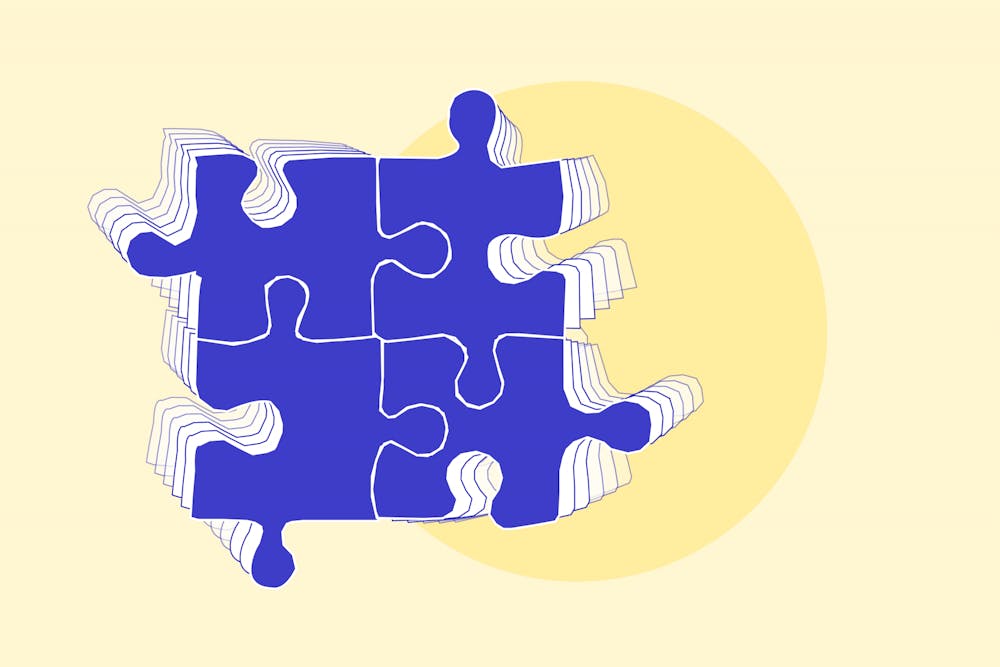I have always been a very anxious person.
Anybody who knows me can attest to that. Other than my diagnosed panic and generalized anxiety disorders, I double and triple check everything I do and frequently second guess myself. I worry about relationships and wonder if what I said will be taken the wrong way. I avoid claustrophobic situations and often take meditation breaks throughout the day. From leg shaking to my heart racing for no reason, anxiety has always been an unwanted companion of mine.
It’s always sucked, and it’s been really hard to find coping methods that work. From meditation to yoga to drinking chamomile tea, I would do anything to try to dissipate the anxiety. During COVID, my symptoms only got worse, and I had to be more creative with coping. I’d find apps with simple anxiety–helping games as a means of distraction. I’d talk myself in circles and circles about how I shouldn’t try to control the panic. All I had to do was breathe. I’d use logic to convince my body to stop being anxious, but to no avail.
It’s like that common psychological trick: don’t think of a brown dog. As soon as you’re told that, all you want to do is think about a brown dog. It’s too tempting not to; if you saw a giant red button that said, “Don’t touch,” your human instinct is to touch it. That’s exactly what my anxiety is, but with severe physiological consequences such as nausea.
In all of my attempts to cope, I luckily found a few things that worked. For one, therapy helped me a ton. I attended the Center for the Treatment and Study of Anxiety (CTSA) for about a year and went through months of extremely helpful exposure therapy. Even so, there were always moments where I struggled and no matter how many techniques I used, I felt stuck. In the end, the treatment that worked was something that hadn’t been prescribed to me at all: putting together jigsaw puzzles.
Growing up, I’d never been a puzzle fanatic. Sure, my family still has dust–covered puzzles in our attic, but I barely remember working on them. I’d always assumed it was something only kids did.
About a couple of months ago, I was hanging out with a friend when he pulled out this seemingly ancient jigsaw puzzle he claimed was from his grandparent’s house. With a bit of hesitation, I sat down and started helping him with it. It thankfully had a good amount of text and very clear blue borders which made it a bit easier. As we worked, I don’t know what clicked, but we ended up sitting there for hours until the entire thing was finished. Looking down at the completed puzzle, I felt calmer than I had in a really long time. This was merely the spark for my newfound puzzle addiction.
I’m not sure why puzzles are so helpful to my anxiety. My running theory is that it’s something I can focus on while also being productive. I get to work on putting a scenic picture together piece by piece. I stop thinking in circles about my anxiety and am instead forced to separate edge pieces from centers and try to find which pieces fit best. I can ground myself in the present while knowing that I’m working towards a larger goal.
Anxiety is tough to understand and even harder to cure. I’ve found that the most effective treatments are ones that allow me to put my energy into something productive while still acknowledging that I’m struggling. I can’t just pretend it doesn’t exist because then I’m essentially gaslighting myself. Instead, puzzling allows me to be aware of my anxiety while putting my energy into something else.
Now, whenever I start to feel anxious, if possible, I pull out a puzzle and start to work on it. I have a couple which I’m still in the process of putting together, even one that’s 1500 pieces. Over winter break, after having a bout of anxiety, I stayed up until 1 a.m. finishing a beautiful sunset puzzle my sister had bought me for Christmas. My new hobby led to me receiving nearly ten different puzzles as presents from family members, but shockingly, I didn’t mind at all.
My anxiety is unlikely to go away anytime soon. Rather than cure it, I’ve focused on coping with it through calming activities like working on jigsaw puzzles. These puzzles have taught me that nothing is ever perfect, and sometimes it does take hours of sitting down and slowly putting the pieces together to finally see a brighter, more beautiful picture.

